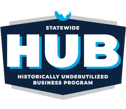Like death and taxes, hospital consolidation is a certainty and an ongoing challenge in the healthcare industry. However, consolidation takes many forms - mergers, acquisitions, large systems, rural hospitals, community healthcare, non-profit, for-profit, and many other unique situations. Each instance involves tedious procedural and cultural changes, including the future of each entity's existing formulary.
In the next two
Safety First blogs, I’ll discuss two of the common types of consolidations from the perspective of the formulary. In both cases, a larger hospital or established health system acquires smaller regional or rural hospitals or even a specific healthcare facility, i.e. chemotherapy treatment, cardiac care, ER, etc. While consolidation can be challenging on all levels, when it comes to formulary, consolidation provides regional hospitals and facilities with more resources regarding negotiating power, medical coding, medication options, compounding opportunities, and even a greater sense of community gained by being part of a larger organization.
The acquiring systems usually go one of two ways with their formulary:
- System-wide formulary that all facilities access
- System-wide formulary that each facility pulls from to create its own formulary
Let’s first discuss the all-encompassing system-wide formulary. This strategy brings in new facilities under the umbrella formulary as they are acquired vs. incorporating a separate unique formulary for each facility.
Regional hospitals or local facilities can access drugs they do not regularly stock through their parent health systems. For example, a hospital admits an elderly woman from a local nursing home who is on drug treatment for Parkinson’s. The hospital needs access to that drug during the patient’s stay but does not regularly stock it. Instead of purchasing a full bottle of 100 pills, they can request the amount of medicine the patient needs from the medical center.
Because the Health System Pharmaceutical and Therapeutics Committee has already vetted and negotiated all the medications within the larger formulary, smaller or regional facilities can gain access to any medication they may need but do not keep in stock quickly and easily. The upfront work of researching needed drugs and negotiating their price has been done for the smaller facility creating efficiency and also cost savings.
The system-wide formulary also provides all the safety information and resource materials through their EHR or formulary management system. Each drug monograph should show what restrictions apply to the selected drug, including Service Line, Formulary Location, Service Population, Prior Authorization Required, Restrictions, and more. All facilities can also access medication safety information and see if the drug is High Alert, has Black Box Warnings, LASA, etc.
While consolidation offers many benefits to smaller facilities and their patients, we know it is not ever easy. As we work with healthcare systems that are strategically acquiring regional hospitals, we’ve helped them through the lengthy and complicated consolidation process that involves technology, property and equipment, and also the more complicated human aspect.
When it comes to the formulary, the
Rpharmy team can help make the process of combining formularies or giving formulary access to a new facility easier. Our
Safety First Blog also has more resources as you plan a formulary merger.
Stay tuned for the next
Safety First blog where I’ll talk through health systems that maintain specific formularies for each system facility.

-1.png?width=600&name=Untitled%20design%20(4)-1.png)


%20(5).png?width=600&name=Rpharmy%20-%20Blog%20Images%20%20(1280%20%C3%97%20720%20px)%20(5).png)

